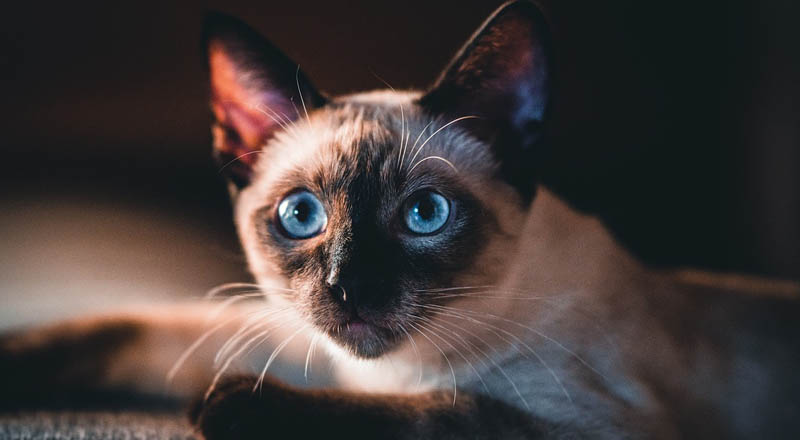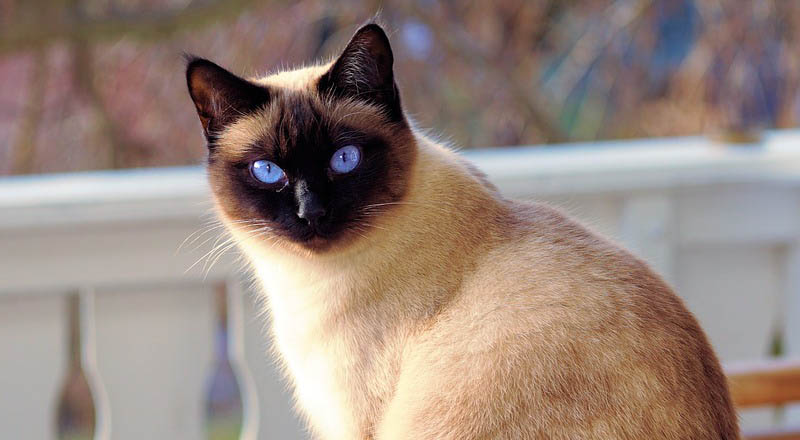Some Myths in Cat Care
Cats are, by nature, elusive and solitary, leading to the dispensation of myths around their behavior, needs and care. Although some of these myths are based in observation, many are false and can enact low-quality or even harmful care strategies.
Shattering these myths is critical to ensuring that cats obtain the proper attention, nutrition, and medical treatment they require to flourish.
In this article, we will take the most popular myths and swap them for the truth, supported by vet science and feline behavior experts. By the end, you will have the information you need to give your cat the best care you can.
Myth No. 1: Cats Always Land on Their Feet
Perhaps one of the longest running myths about cats is that no matter how far they drop from, they always land on their feet.
This belief is based on a cat’s astounding righting reflex, a biological feature that gives them the ability to rotate their bodies mid air so they land feet first. But this doesn’t mean cats can’t be injured by falls.
The Truth
Though cats have an incredible ability to right themselves when falling, they can still get seriously hurt, particularly from very high heights. Falls from great heights can cause broken bones, internal injuries, or even death.
In fact, “high-rise syndrome” is a term veterinarians use to describe cats that suffer injuries from falling out of windows or balconies. The takeaway is that despite their agility, cats can’t seem to do what you’d expect. Keeping windows and balconies secure to avoid unintentional falls is key.
Additional measures include the installation of screens or netting that will not only prevent your feline from escaping but will help them benefit from a bit of sunshine or fresh air.
Myth 2: Cats Can See in Total Darkness
Cats have amazing vision at night, which often leads people to believe they can see perfectly in total darkness. This myth probably comes from observing the skills used by cats to navigate and hunt in low-light conditions, like during twilight hours.
The Truth
Not even your cats can see in pure darkness. Their strong night vision comes from using a high number of cells in their retinas, known as rod cells, which are sensitive to low light and a reflective layer located behind the retina, known as the tapetum lucidum, that amplifies available light.
But cats do require some light to be able to see. They also use their other senses hearing and whiskers to braille their way around in pitch-black darkness. So yes, cats are optimized for low-light environments, but that doesn’t mean that they can see in total darkness.
This adaptation helps make them outstanding hunters at dawn and dusk, but it’s a fallacy to believe they manage well in complete darkness.
Read Also ; Pet acupuncture and alternative therapies
Myth 3: Cats Are Low-Maintenance Pets
For most people, a cat is low maintenance compared to a dog and needs only food, water, and a litter box. This myth results in neglect for the cat’s emotional and physical needs, leaving it unfulfilled.
The Truth
Cats are not low-maintenance animals. They need grooming particularly those with long hair as well as playtime for mental and physical stimulation and regular vet visits for check-ups.
Cats need the right combination of social interaction too, but if you are out of the house often, you might find it difficult to meet their need for companionship, which can make them feel lonely and bored.
Behavioral problems such as aggression, constant meowing, or destructive behavior can occur if these needs are not met. On top of that, cats need a clean litter box, fresh water and a balanced diet in order to be healthy.
For example: brushing your cat weekly can reduce hairballs, while interactive play acts as a way to stave off obesity. Cats can be just as time consuming, effortful and attention-demanding to own as any other pet and the idea that they are “set-and-forget” animals is a myth.
Myth 4: Cats Don’t Need Water to Drink

Some cat owners claim that cats evolved from desert dwellers, so they don’t require a lot of water. While this is a myth (cats do not need to drink per se) it can lead to dehydration, which is especially true for cats that eat dry food as it lacks the moisture found in wet food.
The Truth
Cats do need water, hydrating factors are critical to their existence. Yes, cats have a very low thirst drive compared to other species, but that doesn’t justify a lack of water at all.
Dehydration can cause other serious health problems, such as urinary tract problems and kidney disease, which are prevalent in cats.
To get your cat to drink more, you should offer fresh water every day, invest in a cat water fountain (as many cats prefer the moving water in a fountain), and include wet food in their diet as these generally have more moisture than dry kibble. A hydrated kitty is a healthy kitty, so don’t skimp on this basic need.
The 5th myth: Cats Are Aloof and Independent
Cats might be stereotyped as aloof, distant and less affectionate than dogs. This myth belies the strong emotional bonds that cats can develop with their humans and their desire for social interaction, and continues to perpetuate a false narrative about their nature.
The Truth
They are not naturally aloof; unlike dogs, they are just less obvious in their display of affection. Many cats build close, loving bonds with their owners, craving attention, affection and play time.
Cats also express their feelings with their body language purring, kneading, rubbing against you. Veteran cat owners who know cats act very much like people simply shrug and acknowledge that some types of cats are born more independent than others but that personality, not species, is what matters.
For instance, a cat may wait at the door to greet you, or curl up beside you to show they trust and love you. While it may not always look like it, recognizing your cat’s unique way of expressing love is essential for building a bond, showing that they’re not the cold, aloof beings of lore.
Myth 6: “Cats Should Drink Milk”
The stereotype of a cat lapping up a saucer of milk is an iconic image, but this myth can be detrimental to your cat’s health. It’s a production trope in media, but it doesn’t coincide with feline biology.
The Truth
The vast majority of adult cats are lactose-intolerant, which means they don’t produce the enzyme needed to digest lactose, the sugar found in milk. The reason is that milk can cause digestive upset in cats, with symptoms like diarrhea, vomiting and stomach cramps.
Kittens are able to digest their mother’s milk, but adult cats do not require milk in their diet. Instead, make sure they’re eating fresh water and a balanced cat food that meets their nutritional needs.
When giving your cat treats, choose cat-friendly options such as lactose-free milk made just for cats or small portions of cooked meat. Avoid the dairy section and maintain your cat’s tummy.
Read Also ; Advanced Dog Obedience Techniques
Myth 7: Cats Only Purr When They Are Happy
Purring is understood to be the sound of contentment, and many people think a purring cat is a happy cat. But that’s not the whole story, because purring means so many things.
The Truth
Cats purr for many reasons, and not just when they’re happy. Though purring indicates relaxation or pleasure, cats also purr when they’re in pain, anxious, and even in stressful situations, such as at the veterinarian’s office.
Some experts suggest that purring has a self-soothing or healing function: The frequency of a cat’s purr (around 25 to 150 Hz) has been shown to stimulate tissue regeneration.
If your cat seems to be purring but exhibiting signs of distress, like hiding or not eating, it’s best to consult a vet to make sure there are no underlying health concerns. Purring is a multifaceted behavior, not just a simple signal of happiness.
Myth 8: Cats Are Nocturnal
Cats are primarily nocturnal creatures, meaning that they tend to be more active at night than during the day. This myth may contribute to misconceptions about a cat’s natural behavior and sleep patterns.
The Truth
Cats are not nocturnal; they are crepuscular. This implies they are at their most vigilant at dawn and dusk, which is in line with the hunting habits of their wild relatives.
Although cats sleep for most of the day up to 15 hours for some they often get more active earlier in the mornings or in the evening.
Understanding this can guide you in scheduling play and feeding to your cat’s natural rhythms, minimizing nighttime disturbances and keeping them stimulated during their time of peak activity.
A play session ahead of bedtime, for instance, can tire them out and mean a quieter night for both of you.
9. Myth: Cats don’t need exercise
Some cat caretakers mistakenly think that because cats are smaller and more independent than dogs, they do not need to be exercised regularly. This myth can lead to feline obesity and other health issues as well.
The Truth
Exercise is essential for cats to maintain a healthy weight, stave off boredom, and, of course, to activate their natural hunting instincts. Cats may become overweight without enough movement, which can lead to diabetes, arthritis and heart disease.
Interactive toys, such as feather wands, laser pointers or puzzle feeders, can promote activity and mental stimulation. Goal for 15-20 minutes of playtime per day to help keep your cat in shape and happy! Cats need exercise, and one of the best ways to get it is to play with them.
Myth 10: Indoor Cats Require No Vaccinations
A common misconception is that indoor cats don’t need vaccinations because they never go outside. Such myths leave cats open to preventable diseases, even when inside.
The Truth
Even indoor cats can be exposed to diseases, especially if they slip out once in a while, or if you have other pets that do.
Some viruses, such as feline distemper, are also brought into the home on clothes or shoes. Vaccines guard against serious diseases such as rabies, feline leukemia and upper respiratory infections.
Ask your vet for what your indoor cat should get and when, since the schedule may differ from outdoor cats but is equally important. Cat containment no matter where your cat lives is an important aspect of responsible cat ownership.
Conclusion
Cats are complex, fascinating creatures, and the secret to caring for them is understanding their true needs. By dispelling these common misconceptions, we will be free to find a more nuanced approach to cat care.
From the realization that felines need exercise and social contact to recognizing how vital it is for them to stay hydrated and receive appropriate veterinary care, such truths enable cat lovers to optimize their choices on behalf of their animals.
Keep in mind that every cat is different, and although there are general guidelines, it’s important to pay attention to your cat’s behavior and consult with a veterinarian for tailored advice. Understanding fact from fiction will help your feline friend live a long, healthy, happy life!

